 |
Eleonora's Corset |
 |
 |
Eleonora's Corset |
 |
Corsetry, or stiffened bodies seem to have been a necessary part of clothing of the 16th century onwards. Currently, there are 2 existing corsets, 1 stiffened stomacher, and one suggested "paire of bodies". These existing examples date from 1560 to the early 17th century.
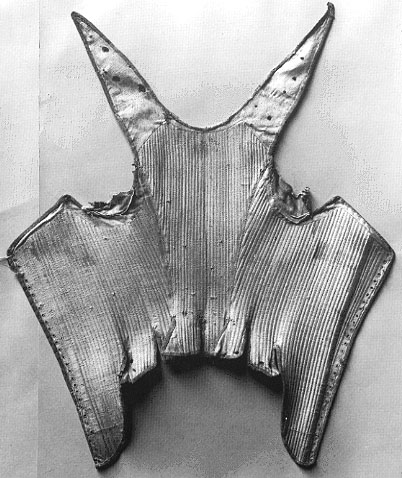
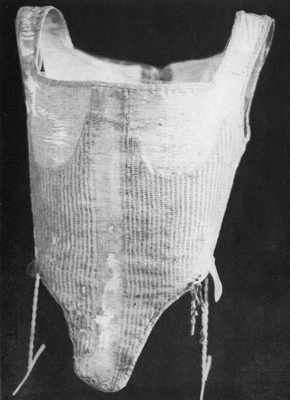
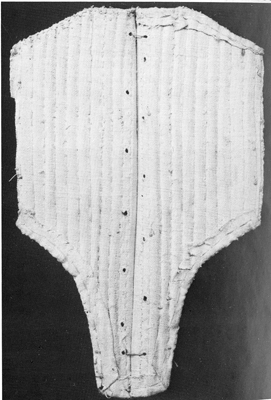
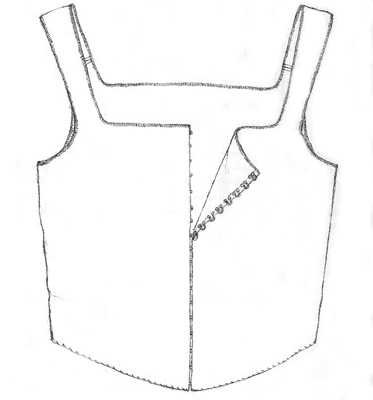
Example 1 - Queen Elizabeth's Effigy corset. Made of apple green fustian (linen/cotton blend) bound with kidskin leather in light green lacing up the front. Stiffened with whalebone. English, 1602
Example 2 - Pfaltzgrafin Dorothea Sabine von Neuburg's corset. Made of Ivory silk satin, bound with matching silk ribbon, and laced with more silk ribbon. Stiffening disintegrated in grave; conjectured to be whalebone. German, 1598
Example 3 - Stomacher. Made of evenweave linen, light coloured, perhaps cream. Bound with linen, and stiffened with reeds and whalebone, and laced up the front. Spanish, early 17th c. (possibly modified in mid 18th c)
Example 4 - Eleonora di Toledo's pair of bodies. Thought to be a pair of bodies. Crimson silk velvet, bound with green linen. Stiffening disintegrated in grave; unknown. Italian, 1562
There is very little evidence of what Florentine bodices would have been stiffened with in the 1540's. As well, Eleonora was raised in her teen years in Naples, and earlier than that, Spain. It would be difficult to accurately indicate with certainty what her "bodies" would have been stiffened with. However, this velvet bodies was most likely a part of her everyday clothes, as Mary Westerman Bulgarella indicates in her article about Eleonora's preparation for burial.
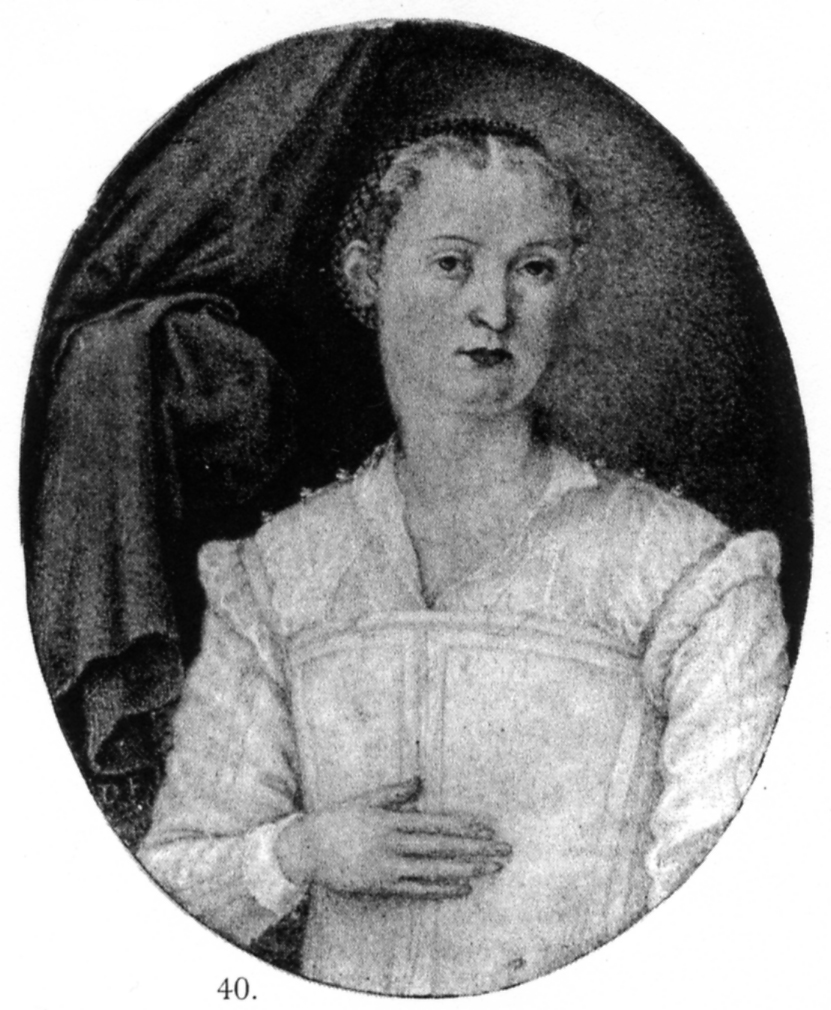 Eleonora's bodice in the painting does not seems to be heavily stiffened as there is no evidence of wrinkles in the bodice. However, this painted miniature of Eleonora by Clovio, does contain some wrinkling under the bust. This pictorial evidence could indicate the difference in formal and informal painting... and formal and informal stiffening. If this is the case, whalebone would be the best, most period stiffening to use for the Bronzino portrait.
Eleonora's bodice in the painting does not seems to be heavily stiffened as there is no evidence of wrinkles in the bodice. However, this painted miniature of Eleonora by Clovio, does contain some wrinkling under the bust. This pictorial evidence could indicate the difference in formal and informal painting... and formal and informal stiffening. If this is the case, whalebone would be the best, most period stiffening to use for the Bronzino portrait.
Whalebone is the most easily recognized stiffener for corsets, and was known in period as far back as 1150 (1), and perhaps even earlier. The modern equivalent would be featherweight plastic boning or spring steel. Other conjectured period stiffeners are rope, cane, paste, quilted layering, or buckram.
The construction:
Due to authenticity, I chose to eliminate all man-made alternatives such as featherweight plastic boning and plastic covered buckram.
Whaleboning is sadly illegal due to the misuse and near extinction of certain whales in the world. At this time, whalebone is not available for use. The next best documented alternative was reeds. I chose reeds because example 3 was the closest related item I could find to what Eleonora would have used based on her background and location.
I chose to include the velvet bodies from her burial as a covering for the corset as it seemed since it was with her in the grave, it would have been something she wore.
I started out with a mock up of the pair of bodies from PoF. I fit it on my model, Jen to see what needed adjusting. After the adjustments were made on the mockup, I retraced the design onto good paper with seam allowances of 1/4".
Bibiliography
http://homepage.mac.com/festive_attyre/research/diary/diary2.htm
http://costume.dm.net/effigy.htm
http://modehistorique.com/elizabethan/effigy.html
PoF
Corsets and Crinolines
Cultural World of Eleonora di Toledo pg 217
_